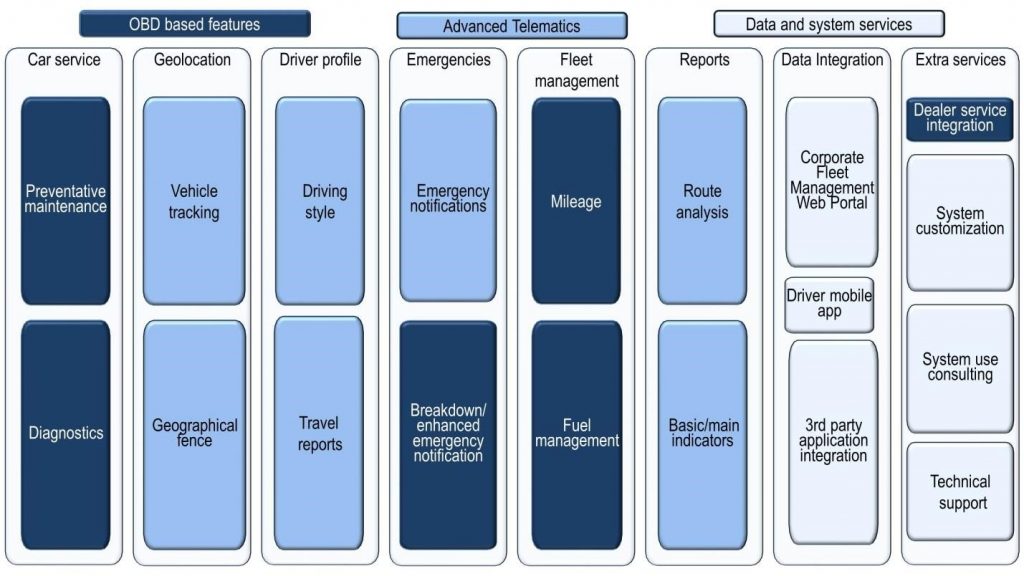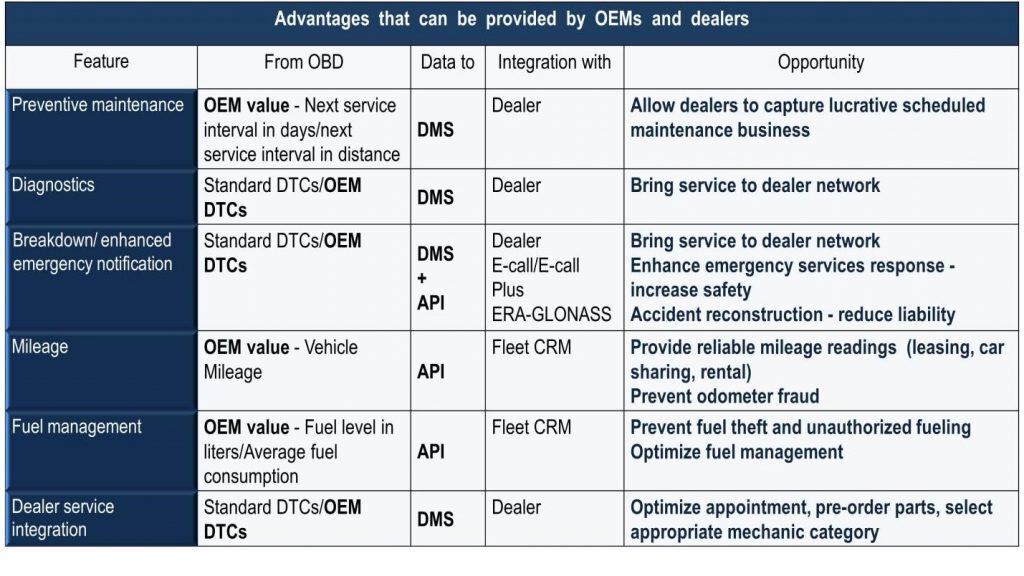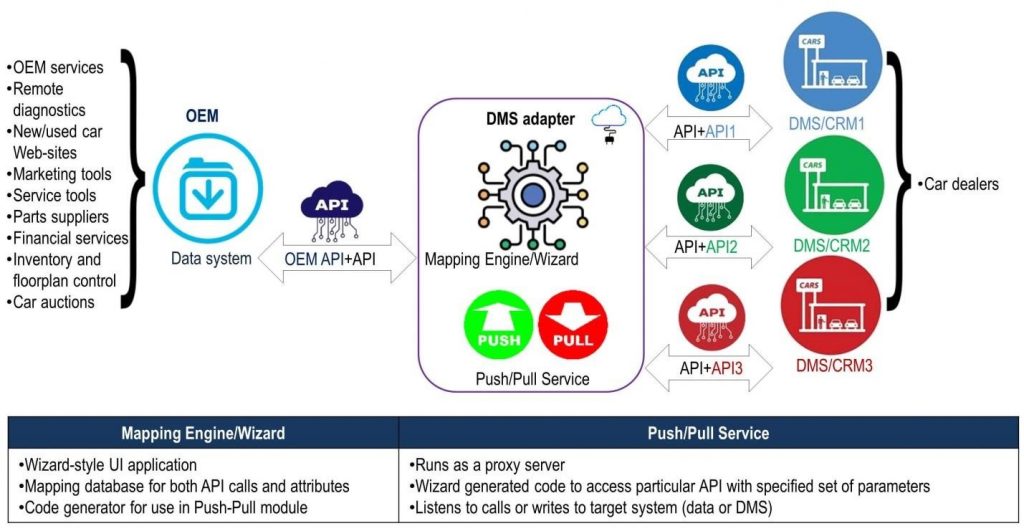Significant unrealized opportunities within advanced Telematics
Advantages of OEM OBD Data integrated with dealer DMS

Telematics and DMS
The lion’s share of car service over its lifecycle is performed through the network of franchised car dealers. Therefore it’s crucial for OEMs and data vendors to have smooth integration with dealers in order to feed data into established dealer process. For instance – remote diagnostics are best used if they go to CRM (for customer contact) and Service (for repair order initiation). While in US there are three main DMS providers (Reynolds, CDK and DealerTrack), offering certified integrations for vendors into various parts of DMS (sales, service, accounting, etc.), in Europe, and especially in Russia, there is a garden variety of DMS systems, with widely varying API. In order to get the data to dealers, vendors have to rely on third parties or get involved in lengthy integration process.
Is understanding of DMS important, when working with OBD?
We think it is absolutely critical! Few years ago one of the largest global suppliers of technology and services to automotive industry came out with a truly advanced remote diagnostics system, available in several form-factors to cover a wide range of applications, from new cars to aftermarket sales. However, the system was offered as white label hardware, assuming car manufacturers would write their own apps and integrate with DMS of their respective franchised dealer networks.
Result?
Despite sincere interest from car manufacturers and their local distributors, the system did not find demand the way it was offered and seems to be no longer available. That solution had every hallmark of a winner and we think it can still gain a significant share of the market, despite the time lost, if revived and offered as a turn-key solution.
What does integration of OBD data to DMS do? It allows creation of customer mobile apps that include functionality needed for OEM data as well as the dealer/fleet owner -specific requirements.
Additionally, Mobility as a Service (MaaS) can be used to the advantage of OEMs and dealers by making a MaaS friendly car fleet and connecting it to the dealer network as the logical step.
Current State of OEM/Dealer DMS integrations
Historically, OEMs’s and major technology suppliers (like providers of advanced car diagnostics, e.g. Bosch, Continental, etc.) had rather limited understanding of internal dealer processes and, especially, dealer DMS systems, which are dealer’s bloodline, therefore hindering potential effectiveness of data distribution, making entire process cumbersome and sometimes cost-prohibitive.
There are hundreds of teachings on DMS, and if anyone needs a crash course on it – one can visit the website in reference (1).
There is a complexity of relationships within entangled web of DMS arena between DMS providers, OEMs, dealers, ad-hoc technology suppliers and myriads of integrations. In Reference (2) is an article by President of NADA Peter Welch. The very name of the article relates the situation: “It’s Time to Get Our Arms Around the Data Quagmire”
OEM OBD libraries
There are thousands of OBD DTCs (diagnostic trouble codes) in modern cars. Good portion of them are OEM specific. It’s expensive to get updated OEM libraries and not many experts really know how to use them. Major technology providers, like Bosch, consider OEM DTCs as their crown jewels.
But surprisingly few OEMs are taking advantage of it so far, while more and more third parties are gaining edge on lucrative advanced Telematics market. What about integrating remote diagnostics with dealer DMS systems (Connected Car with Connected Dealer genuinely completes the equation!) plus creating an external API interface to access pre-packaged features for authorized third parties?
Coincidentally, the same remote diagnostics features would be attractive and can be packaged in mobile apps and other services to retail customers as well.
Picture below shows what kind of advantages can be added to common Telematics solutions by adding OEM OBD libraries.

Integrating these features with dealer DMS opens a wide range of new business opportunities for OEMs, dealers and service providers.
Picture below shows just some of them

Universal Data to DMS adapter
While getting data in and out of some DMS systems requires certified integrations, many DMS systems are open, but have various API. There is opportunity for OEMs and major technology suppliers to create a universal data-to-DMS adapter to streamline such integrations. Once such adapter is created, it can be dynamically configured to support additional tasks. Below is an example of how aforesaid adapter can be designed.

Reference:
- https://www.drivingsales.com/buyers-guide/dms
- https://blog.nada.org/2019/09/17/its-time-to-get-our-arms-around-the-data-quagmire/
About the author

Sergey Naumovsky has been involved in automotive industry for about 30 years, working in Autoretail and technologies of its automation. Among customers are Cox Automotive, Bosch GmbH, Mitsubishi Corporation, MC Bank Rus, NP GlONASS and major car dealer groups.
Published in Telematics Wire


